|
 24 December 2005 |
|
 17 December 2005 |
|
 10 December 2005 |
|
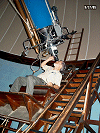 3 December 2005 |
|
 26 November 2005 |
|
 19 November 2005 |
|
 12 November 2005 |
|
 5 November 2005 |
|
 29 October 2005 |
|
 22 October 2005 |
|
 15 October 2005 |
|
 8 October 2005 |
|
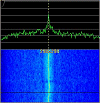 1 October 2005 |
|
 24 September 2005 |
|
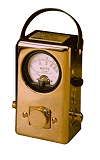 17 September 2005 |
|
 10 September 2005 |
|
 3 September 2005 |
|
 27 August 2005 |
|
 20 August 2005 |
|
 13 August 2005 |
|
6 August 2005 |
|
 30 July 2005 |
|
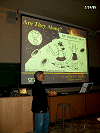 23 July 2005 |
|
 16 July 2005 |
|
 9 July 2005 |
|
 2 July 2005 |
|
 25 June 2005 |
|
 18 June 2005 |
|
 11 June 2005 |
|
4 June 2005 |
|
 28 May 2005 |
|
 21 May 2005 |
|
 14 May 2005 |
|
 7 May 2005 |
|
 30 April 2005 |
|
From The SETI League's 2005 Annual Membership Meeting in New Jersey last week, SETI League awards committee chairman David Ocame rang up this year's Giordano Bruno Memorial Award recipient by cellphone, to announce his award. James Brown, W6KYP, was honored for 28 years of amateur SETI activity, including distribution of free tracking, coordination, and signal analysis software through his seti.net domain. See this Press Release for details.
SETI League photo |
 23 April 2005 |
|
 16 April 2005 |
|
  9 April 2005 |
|
 2 April 2005 |
|
 26 March 2005 |
|
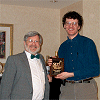 19 March 2005 |
|
 12 March 2005 |
|
 5 March 2005 |
|
 26 February 2005 |
|
 19 February 2005 |
|
 12 February 2005 |
|
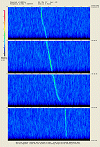 5 March 2005 |
|
 29 January 2005 |
|
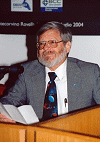 22 January 2005 |
|
 15 January 2005 |
|
 8 January 2005 |
|
 1 January 2005 |
Click here for lots more pictures.
email the Webmaster | entire website copyright © The SETI League, Inc.; Maintained by Microcomm this page last updated 31 December 2005 |
Top of Page |
 SETI League Photo Gallery
SETI League Photo Gallery